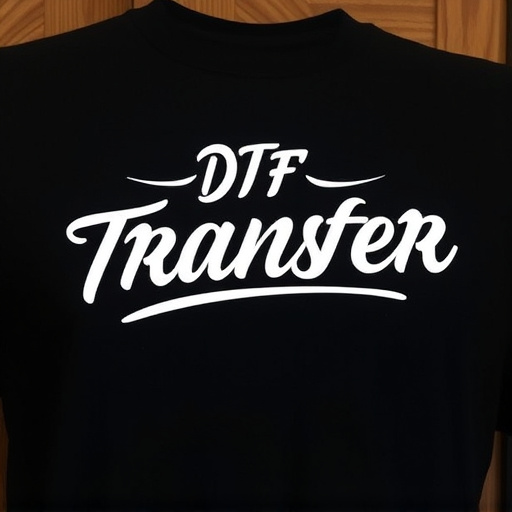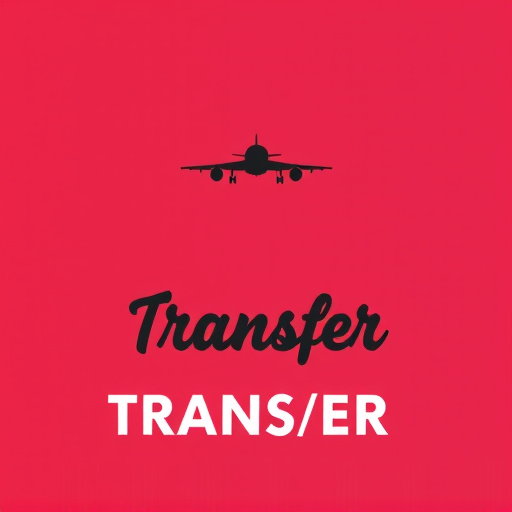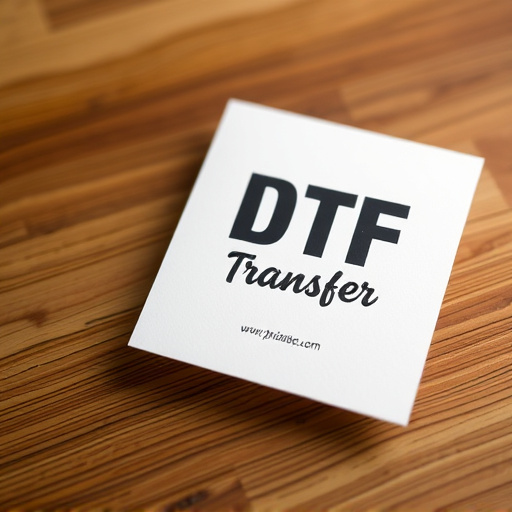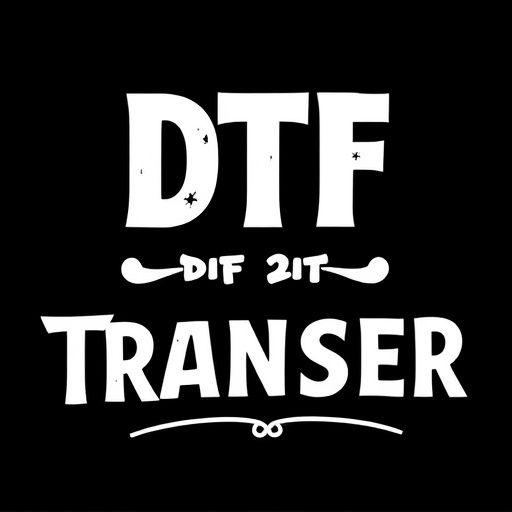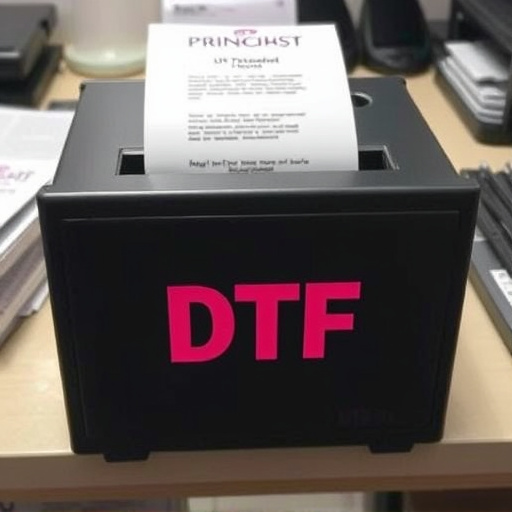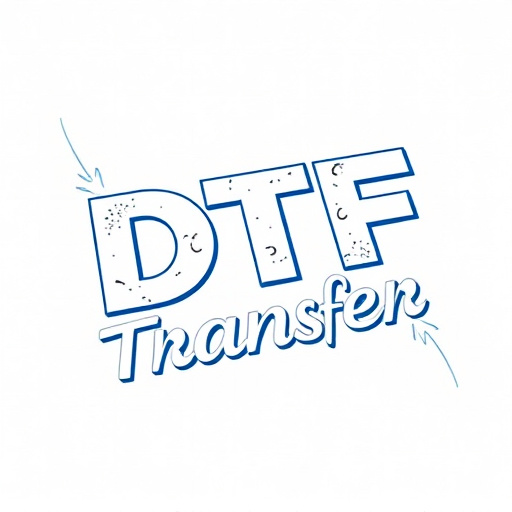Direct to Fabric (DTF) printing is a cutting-edge technique for creating vibrant, durable designs on sweatshirts and hoodies. Artists use digital software to craft graphics, which are then reversed for printing onto a thin film using high-resolution equipment. The film is precisely aligned against fabric, and heat and pressure activate the ink, fusing permanently into the fibers. DTF offers unparalleled design versatility, accommodating intricate details and rich colors, suitable for gifts, events, or fashion lines. Using compatible materials like specialized transfer films and cotton/polyester fabrics ensures optimal results, with designs maintaining integrity after washing.
In today’s fashion-forward landscape, customizing apparel with unique designs is a growing trend. One innovative method gaining traction is Direct to Fabric (DTF) transfer printing. This article delves into the world of DTF transfers, offering a comprehensive guide for those looking to integrate this technology into their clothing line or personal projects. From understanding the process to exploring creative design possibilities and best practices, we’ll uncover the advantages and intricacies of DTF prints for sweatshirts and hoodies.
- Understanding DTF Transfers: A Comprehensive Overview
- The Process of DTF Printing: From Design to Fabric
- Advantages of DTF Prints for Sweatshirts and Hoodies
- Choosing the Right Materials for Optimal Results
- Creative Possibilities: Designing Your Custom DTF Transfer
- Best Practices for Applying DTF Transfers on Clothing
Understanding DTF Transfers: A Comprehensive Overview

DTF (Direct to Fabric) transfers are a cutting-edge printing technique revolutionizing the way we personalize sweatshirts and hoodies. Unlike traditional methods, DTF involves transferring printed designs directly onto the fabric surface, offering unparalleled durability and vibrancy. This process starts with high-quality print files that are then precisely aligned and pressed onto the desired garment using specialized equipment.
The beauty of DTF Transfers lies in their versatility and ability to produce stunning, long-lasting prints. These transfers can feature intricate details, rich colors, and even photographic images, making them ideal for a wide range of applications. Whether you’re personalizing a gift, creating custom apparel for an event, or launching a unique fashion line, DTF Printing provides a professional finish that ensures your designs truly come to life on the fabric.
The Process of DTF Printing: From Design to Fabric

The process of Direct to Fabric (DTF) printing is a cutting-edge method that revolutionizes how we bring designs to wearable surfaces like sweatshirts and hoodies. It begins with digital design, where artists create or adapt graphics using specialized software. These designs are then reversed for printing, ensuring the ink adheres correctly to the fabric.
The actual DTF transfer involves a precise printing process where a high-resolution image is printed onto a thin, flexible film. This film is then carefully aligned and pressed against the fabric, with heat and pressure activating the ink, which fuses permanently into the fibers of the garment. The result is a vibrant, long-lasting print that retains its quality even after numerous washes.
Advantages of DTF Prints for Sweatshirts and Hoodies

Direct to fabric (DTF) prints offer a revolutionary approach to customizing sweatshirts and hoodies, providing several advantages over traditional methods. The DTF transfer process involves applying ink directly onto the fabric’s surface, resulting in vibrant, long-lasting colors that are both soft to the touch and durable. This technique ensures that designs retain their clarity and quality even after repeated washings, making it an ideal choice for creating high-quality, personalized apparel.
Moreover, DTF printing allows for a vast array of design possibilities. From intricate graphics and detailed images to bold text and illustrations, the technology can reproduce complex artwork seamlessly. This versatility makes it popular among businesses and individuals looking to create unique, eye-catching garments, whether for marketing campaigns, events, or personal expression.
Choosing the Right Materials for Optimal Results
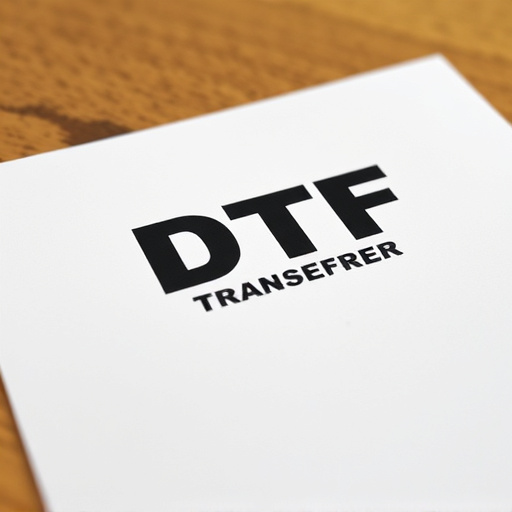
When it comes to creating visually appealing designs for sweatshirts and hoodies using film transfers, selecting the appropriate materials is paramount for achieving optimal results with DTF (Direct-to-Fabric) transfers. The quality of the final prints heavily relies on the compatibility between the transfer film, ink, and fabric. Opting for high-quality, specialized DTF transfer films ensures crisp and vibrant colors that withstand washing without fading or cracking. These films are designed to adhere perfectly to various fabrics, providing a smooth surface for printing.
Additionally, choosing the right fabric type is crucial. Natural fibers like cotton or polyester offer excellent absorbency and compatibility with DTF inks, resulting in vivid prints. Pre-treated fabrics specifically formulated for DTF printing can further enhance the process, guaranteeing that your designs look as intended even after multiple washes. The key lies in understanding the material’s properties to make informed choices, ensuring both the longevity of the print and the overall aesthetic appeal of your custom sweatshirts or hoodies.
Creative Possibilities: Designing Your Custom DTF Transfer

Creating custom DTF (Direct to Fabric) transfers opens a world of creative possibilities for sweatshirt and hoodie designs. With DTF Printing, you can transform your garments into unique pieces of art. Imagine adding intricate graphics, vibrant colors, or even textural elements that pop right off the fabric—it’s all achievable with the right design software and printing techniques. Whether you’re an artist, designer, or simply someone who loves self-expression, DTF offers a versatile medium to bring your vision to life on a variety of clothing items.
Designing your custom DTF transfer involves several steps. Start by sketching or digitizing your desired image using vector graphics software. Ensure your design is optimized for fabric printing with appropriate resolution and color profiles. Once ready, prepare the file for cutting, considering the shape and layout of the transfer on the garment. The beauty of DTF lies in its ability to create detailed, long-lasting prints that can enhance any clothing piece, making it a popular choice for personalizing sweatshirts and hoodies with intricate designs or monograms.
Best Practices for Applying DTF Transfers on Clothing
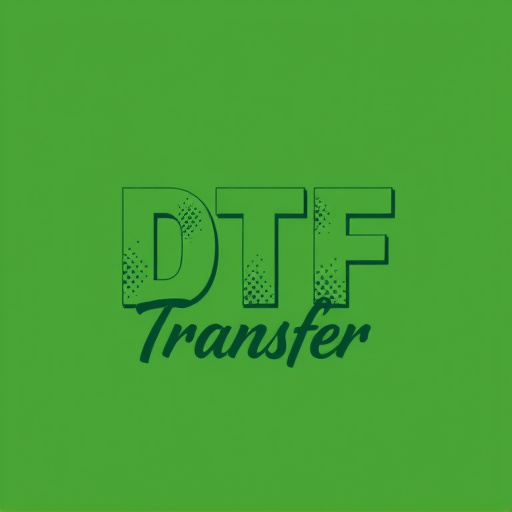
Applying Direct to Garment (DTF) transfers to sweatshirts and hoodies requires a few key best practices for achieving high-quality results. First, ensure your design is optimized for DTF printing, with sharp outlines and minimal detail to prevent smudging or bleeding during the transfer process. Use compatible materials like 100% cotton or poly/cotton blends for the best adhesion.
Pre-treating the garment is crucial; clean the surface thoroughly and apply a heat-activator spray to prepare the fabric for the DTF print. When applying the transfer, use a press with even pressure and a temperature range between 320-370°F (160-190°C) for optimal bonding. Allow adequate cure time before wearing or washing the garment to ensure the DTF prints remain vibrant and durable.
